|
UA MINIRESIDENSSIT: GEORGIE GOATER & ARLENE TUCKER (siirryt Urbanapa nettisivuun) ENGLISH BELOW Demo, keskustelu, ulostulo – Georgie Goaterin ja Arlene Tuckerin residenssijakso kulminoituu julkiseen tapahtumaan SOLU-tilassa, jossa taiteilijat jakavat prosessiaan ja työtään. Vapaa pääsy! Residenssinsä aikana Georgie ja Arlene tutkivat intersemioottisten käännösten prosesseja erityisesti välineestä liikkeeseen. Miten esimerkiksi visuaalinen teos käännetään liikkuvaan kehoon? Miten voisimme ruumiillistaa tai fyysistää tekstin kääntämisen avulla? Miten ymmärrämme viestin ja miten voisimme koodata, purkaa ja koodata elementtejä kunnioittaen samalla lähdetekstiä? Kääntämällä tulemme tietoisemmiksi siitä, miten vastaanotamme tietoa ja miten haluamme viestiä. Kääntäminen on konkreettinen tapa olla aktivisti ja lisätä tietoisuutta valinnoistamme ja merkityksenantoprosesseistamme. Tuomalla kääntämisen kehoon ymmärrämme ja harjoittelemme sanojen ulkopuolisia viestintätapoja. Lähtökohtamme on, että olemme jatkuvassa käännöksessä. Käytämme apuna Jeremy Mundayn kirjaa ‘Introducing Translation Studies: Theories and Applications’, jotta voimme luoda pisteitä ja leikkimielisiä mutta kriittisiä lähestymistapoja käännöstekniikoihin ja -teorioihin käytännössä kehon kanssa. Koska tiedämme, että yhdessä olemme luonnostaan erilaisia ja suhteellisia, keskitymme tarkastelemaan osallisuutta, saavutettavuutta ja kuulumista, mikä tuo esiin subjektiviteetteja yhteistyössä. Miten voimme piirtää omilla yksilöllisillä kehoillamme, liikkuvuusvälineillämme ja liikeilmaisuillamme? Miten voimme saadaitsemme kuuluviin tanssin ja liikkeen avulla? Arlene on käyttänyt käännöstekniikoita taiteen luomiseen, mutta myös viestinnän ymmärtämiseen vuodesta 2009 lähtien Translation is Dialogue (TID) -työnsä kautta. Suurimmaksi osaksi käännökset ovat olleet visuaalisia ja tekstuaalisia. TID:n kautta Arlene on työskennellyt erilaisten yhteisöjen kanssa ja erilaisten iteraatioiden kautta, kuten Bogotassa, Kolumbiassa, sijaitsevien vanhainkotien asukkaiden kanssa ja vankiloista kärsivien ihmisten kanssa, kuten Free Translation -teoksessa. Georgie on työskennellyt tanssitaiteen parissa vuodesta 2012 lähtien keskittyen esteettömyyteen ja osallisuuteen. Arlene ja Georgie alkoivat miettiä kääntämistekniikoiden tutkimista muilla tavoin kehon kanssa liikkeen ja tanssin avulla, jotta kääntämismatriisiin voitaisiin sisällyttää monipuolista havaintotietoa. Milloin: 20.4.2024 klo 13:45 (tapahtuman kesto n. 90 min) Where: SOLU-tila (Panimokatu 1) Language: englanti & suomi Jos olet kiinnostunut tulemaan tutustumaan kanssamme SOLUssa, ota yhteyttä Arleneen tai Georgieen [email protected] tai [email protected]. Jakotapahtumaan on rajoitetusti paikkoja! Ilmoittauduthan sähköpostitse Georgielle. Ilo, 3,5-vuotias jackrussellinterrieri, tulee mukaan tapahtumaan. Georgie Goater on Aotearoasta kotoisin oleva tanssitaiteilija, joka asuu Helsingissä. Hän on syntynyt ja kasvanut kaksikielisenä Nagoyassa (JP) ja Ōtautahissa (NZ). Hän esiintyy ja koreografioi, fasilitoi työpajoja, kirjoittaa ja tekee yhteistyötä itsenäisesti, Kaaos Companyn (FI) ja Memory as Medium- sekä Body Island -kollektiivien (NZ/FI) kanssa. Työskentely erilaisten ruumiillisten käsitysten kanssa sekä vammaisuuden ja monikulttuurisuuden konteksteissa liikkuminen on luonut perustan jatkuvalle oppimiselle. Arlene Tucker hyödyntää työssään käännösopintoja, visuaalista taidetta, semiotiikka ja feministisiä praktiikoita. ”Taiteeni hahmottuu installaation ja dialogikäytäntöjen varaan. Toteutan työni yhteistyössä yleisön kanssa, minkä myötä voimme jakaa yhdessä perpektiivimme identiteettiin ja kuulumiseen liittyen esimerkiksi muistojen, hiusten ja kirjeiden kirjoittamisen keinoin.” Kun hän kerää ja muotoilee uudelleen identiteettejä ja haastaa samalla normeja, hän kohtaa sukupolvien väliset piilotetut traumansa ja pyrkii myönteiseen muutokseen. Saavutettavuus Pääsisäänkäynnille johtaa 9 porrasta, minkä lisäksi ovelle pääsee rakennuksen vieressä olevan rampin kautta. Etuovi on painava ja siinä on 2cm kynnys. Aulasta pääsee SOLU-tilaan (3. krs) hissillä. Tilassa on suuri wc, johon mahtuu pyörätuolilla. Vessan ovella on 2 cm kynnys. Pyörätuoli mahtuu vain wc-pöntön vasemmalle puolelle (wc-pönttöä päin katsottuna). Vain pöntön vasemmalla puolella (pönttöön päin katsottuna) on kaide, jonka voi nostaa ylös. Tilassa ei ole induktiosilmukkaa. UA Miniresidenssit on UrbanApan uusi konsepti, jonka tarkoituksena on mahdollistaa jatukea taiteilijoiden ja taiteen tekijöiden työskentelyä pehmeällä, kevyellä ja yhteisöllisellätavalla. Ensimmäisessä vaiheessa miniresidenssejä pilotoidaan, mutta pidempiaikainen haave on tarjota tiloja laajemminkin taiteen käyttöön, rikastuttaa ruohonjuuritason työskentelyä ja laajentaa taidealan tukirakenteita. A sharing, a demo, a discussion, an outcome – Georgie Goater’s and Arlene Tucker’s residency period for UA Miniresidencies culminates in a public event in SOLU Space where the artists share some of their process and work. Free admission!
During their residency, Georgie and Arlene will be exploring processes of intersemiotic translations specifically from a medium into movement. For example, how would one translate a visual piece to the moving body? How would we embody or physicalise a text using translation? What is our understanding of the message and how could we code, decode, and encode the elements while honouring the source text? By translating, we become more aware of how we receive information and how we want to communicate. Translation is a concrete way to be an activist and grow more awareness of our choices and meaning-making processes. By bringing translation into the body, we understand and practice modes of communication beyond words. We come from the perspective that we are in a constant state of translating. We will resource Jeremy Munday’s book, ‘Introducing Translation Studies: Theories and Applications’ for creating scores and playful yet critical approaches to translation techniques and theories inpractice with the body. Knowing that together we are inherently diverse and relational, we will have a focused lens on inclusion, accessibility, and belonging, bringing into focus subjectivities within collaboration. How can we draw with our unique embodiments, mobility tools and movement expressions? How can we make ourselves heard through dance and movement? Arlene has been using translation techniques as a mode to create art, but also to betterunderstand what is being communicated since 2009 through Translation is Dialogue (TID). For the most part, the translations have been visual and textual. Through TID, Arlene has been working with various communities and through different iterations such as residents of elderly homes in Bogota, Colombia and through people affected by incarceration as in FreeTranslation. Georgie has been working with dance art with focus on access and inclusion since 2012. Arlene and Georgie started to think about exploring translation techniques in other ways with the body through movement and dance, to include diverse perceptual knowledge into the translative matrix. When: 20 April 2024 at 13:45 (duration approx. 90 minutes) Where: SOLU Space (Panimokatu 1) Language: English & Finnish If you are interested in coming to explore with us at SOLU, please reach out to Arlene or Georgie [email protected] or [email protected]. Places are limited! Email Georgie to register. Please note that Ilo, a 3.5 year old Jack Russell terrier, will be joining the event. Georgie Goater is a dance artist from Aotearoa, based in Helsinki. She was born and grewup bi-lingual in Nagoya (JP) and Ōtautahi (NZ). She performs, choreographs, facilitates workshops, writes, and collaborates as a freelancer, with Kaaos Company (FI) and with collectives Memory as Medium and Body Island (NZ/FI). Working with diverse embodied perceptions across disability and multi-cultural contexts has been a ground for making and constant learning. Arlene Tucker’s socially engaged work utilizes translation studies, visual art, semiotics, and feminist practices. “I realise my art through installation and dialogical practices. Always a co-creation with the public, my work allows us to share perspectives about identity and belonging through different mediums and approaches such as memories, hair, and letter writing.” As she accumulates and reformulates identities whilst challenging norms, she confronts her hidden intergenerational traumas for positive change. Accessibility 9 stairs lead to the building’s front lobby. There is also a ramp next to the building through which you can access the front door. The front door is heavy and has two 2 cm thresholds. From the front lobby, you can take an elevator directly to the SOLU Space (3rd floor). There is a large toilet that can accommodate a wheelchair. The toilet has a 2 cm threshold on the door. A wheelchair can only fit on the left-side (when facing the toilet) of the toilet. There is a handrail only on the left of the toilet (when facing the toilet) which can be lifted up. The space does not have an induction loop. UA Miniresidencies is a series of short residencies that aims to enable and support artists’ and makers’ research or work in progress in a soft, light, and communal way. The long term dream is to alleviate the urgent need for working spaces, enrich the local grassroots scene and create expanded structures of support.
0 Comments
"The 2023 Aleksanteri Conference will be held on October 25–27 at the University of Helsinki, Finland. This year’s conference will address changes in the relationships within and between the former communist countries of the Global East, by which we mean the region that has been labelled as post/former -Soviet, -socialist, -communist, -imperial. More info about the conference and program here."
Workshop on Thursday, October 26 from 18:00–19:00 at HALL 4 (B214), Metsätalo Free Translation is a multi-disciplinary project showcasing international works by persons affected by imprisonment. In this project we view works of art and letters received from prisons all over the world. Together we interpret the meaning of the works and create responses based on the translations. These are then sent to the original authors and added to the online exhibition. In this edition the special focus is on political prisoners in Russia. Workshop facilitators Arlene Tucker and Anastasia Artemeva. Institutions Depowered: Schools, Hospitals and Prisons
[Discussion, 150 min] [Audio with captions streamed online] Studio 1, Theatre Academy of Uniarts Helsinki 7 October from 10.00 – 12.30 Birgit Ærenlund Bundesen & Anna Rieder Prison Outside / Free Translation (Anastasia Artemeva & Arlene Tucker) Anissa R. Lewis Eva Koťátková Hosted by Frame Contemporary Art Finland Penal and care Institutions control and reproduce human life throughout its growth, from its birth to the ageing body-mind. Schools, hospitals and prisons are ubiquitous institutions, they directly or indirectly affect a large number of individuals all over the world. Through institutional control and care, individuals and communities learn to recognise behaviour that is not approved and that is considered productive. However, these institutions are also a part of racist, patriarchal and capitalist structures that ban care–as well as direct control–for certain individuals and communities in order to regulate their possibilities to live off common wealth and prosperity. The power of penal, care and educational institutions lies in the reproduction of certain kinds of normalised body-mind and economic orders that benefit the ruling elite. De-powering institutions means to act and live through practices that repair and replace the effects of institutional control and hierarchies within the institution and beyond that. Institutions Depowered: Schools, Hospitals and Prisons presents artistic practices situated within and outside of penal, education and care institutions. The conversation brings together artists, researchers, a psychiatrist and a poet to unpack their practices and collectively explore potential de-powering tactics. Anissa R. Lewis’ practice departs from arts-based women empowerment classes for a Philadelphia County prison’s drug and alcohol abuse unit. She will open up about how these experiences have helped her work to address matters of identity, civic engagement, and neighbourhood relationships in her home town Covington, KY. Artists Anastasia Artemeva and Arlene Tucker have collaborated in the context of the Prison Outside / Free Translation project showcasing international works by currently and formerly incarcerated people as well as anyone affected by imprisonment. They aim to promote self-expression, solidarity and communication between people of all walks of life. Psychiatrist Birgit Ærenlund Bundesen & poet Anna Rieder use poetry to engage clinicians and artists in a constructive dialogue. They are presenting poems from the collection March, March again that will be published by the Danish publishing House Gyldendal in the spring of 2023. Artist Eva Koťátková presents Futuropolis: School of Emancipation which aims to renew the possibilities of education as societal power for the future by bringing together educators, artists and activists to renew the curriculum. Event Schedule 10 Intro and welcome Jussi Koitela 10.10 Presentation by Anissa Lewis + Q&A (20 min) 10.30 Presentation by Anastasia Artemeva & Arlene Tucker + Q&A (20 min) 10.50 short break 10.55 Presentation Birgit Ærenlund Bundesen & Anna Rieder + Q&A (20 min) 11.15 Presentation by Eva Kotatkova + short Q&A (20 min) 11.35 short break 11.45 – 12.30 conversation How to attend This event requires registration using this form. The event takes place at the Theatre Academy of Uniarts Helsinki. An audio stream from the event will be broadcast live on Frame’s website and YouTube channel and available to watch after the event. For the whole programme, click here. See you there!! Welcome to Nonviolent Communication Practice Sessions. Nonviolent Communication (NVC) is for people who are interested in active listening and who seek clarity on their needs and feelings. We will use NVC as proposed by Marshall Rosenberg and Meenadchi who teaches Non-Violent Communication with a decolonial and transformative justice lens (DNVC).
The virtual NVC practise sessions are on: September 20 from 16-18:00 EEST October 11 from 16-18:00 EEST November 8 from 16-18:00 EEST These practise sessions are for people familiar and not so familiar with NVC. By doing so we figure out how to be heard in the way intended, how to communicate clearly and how to listen empathetically. Register to the sessions by emailing me at [email protected]. I will then send you the ZOOM link. Please specify which session(s) you will be attending. The main language of the meetings will be in English. Other languages are highly recommended as multilingualism is celebrated. This is dependent on participants. Feel free to reach out with any questions. Thank you and hope to see you there! XX arlene Free Translation is working with Mieli for Mental Health Art Week (MHAW).
MHAW - Hyvää mieltä kulttuurista -viikolla paikalliset jäsenjärjestöt ympäri Suomen järjestävät mielen hyvinvointia edistäviä kulttuuri- ja taidetapahtumia yhteistyökumppaneidensa kanssa. MHAW 2022 viikon teema on toivo ja rohkeus. Tapahtumaviikko on osa MIELI ry:n 125-vuotis juhlavuotta, jonka pääviesti on “mielenterveys kuuluu kaikille.” Tervetuloa Vapaa käännös -projektiin Sinun tarinasi on tärkeä 10.5.2022 klo 16.00-18.00 Pidätkö taiteen tekemisestä? Tai haluaisitko kokeilla miltä se tuntuu? Haluaisitteko lisätä ymmärrystä itsestä ja muista taiteen avulla? Tervetuloa Vapaa käännös -projektiin missä voidaan jakaa tarinoita ja tehdä taidetta. Sinulla ei tarvitse olla aikaisempaa taiteellista kokemusta osallistuaksesi, vain halu kokeilla luovuutta. Harjoitellaan yhdessä itsemme ilmaisua ja uusien tapojen etsintää kuten leikillisiä tapoja kommunikoida. (Opetellaan miten voimme ilmaista itseämme, löytää äänemme, ja samaan aika keksiä uusia leikillisiä tapoja kommunikoida). Tutustutaan taiteellisiin teoksiin ja keskustellaan näistä,jotka ovat saapuneet eri puolilta maailmaa vapaiden käännösten (Free Translation) - projektin aloitteesta. Teoksia ovat luoneet ihmiset, joiden elämään on vaikuttanut vankeus; kokijana tai läheisenä. Työpajan paikka: Miestena asemalla; Mikkelin rautatieasema, Mannerheimintie, 50100, Mikkeli Kenelle: Miesten aseman kävijöille, jotka pohtivat omaa hyvinvointiaan elämän taitekohdisssa Ota yhteyttä: [email protected] Näytellyn aika: 23-29.5 Tämän jälkeen teemme omaa tulkintaamme teoksista, ikään kuin käännöksiä, vastauksia taideteoksille, ja lataamme ne halutessasi verkkonäyttelyyn, jossa myös taiteilijat ja suurempi yleisö voivat osallistua dialogiin. Käytämme käännöstekniikoita keinona tulkita luovasti lähdeteoksia. Tämä tarkoittaa, että tulkitsemme teosten merkityksiä ja luomme niiden käännösten perusteella uusia taideteoksia. Hankkeen tekijät: Anastasia Artemeva, taiteilija https://anastasia-artemeva.com Arlene Tucker, moninaisuusasiantuntija ja kuvataiteilija, https://www.arlenetucker.net Puhumme suomea, venäjä, englantia Työpajaa toteutetaan yhteistyössä MIELI Etälä-Savon Mielenterveys ry:n kanssa ja on osa Mental Health Art Week -tapahtumaviikkoa. Vapaa käännös (Free Translation) on monialainen hanke joka esittelee taidetta vangeilta, ex-vangeilta ja ihmisiltä, joiden elämään vankeus on vaikuttanut. Kyseessä on verkossa esillä oleva versio Vapaa käännös-näyttelystä. Hankkeen ajatuksena on tarkastella taide- ja kirjallisuus -teoksia, jotka saapuivat meille avoimen haun kautta. Lisätietoja tässä https://prisonspace.org/ ja http://freetranslation.prisonspace.org The 7th IATIS Conference will be held both on site in Barcelona and remotely from 14-17 September 2021. Free Translation is very honored to be a part of IATIS' conference focusing on 'The cultural Ecology of Translation'.
Arlene Tucker will be presenting Making Accessibility: Intersemiotic translation as an inclusive creative practice in working with system impacted artists on September 14th at 15:15 (Room 5/Panel 4). Arlene will share Free Translation's research, practice, and methodology. Tucker has been co-writing an article about these transnational translative experiences with Tomás. Full program and Book of Abstracts available here. If you want to access the online event and have not registered yet, follow this link For entry requirements to Spain, official information can be found here for Spain in General and here for the Autonomous Region of Catalonia. It is advisable to double check details with the Spanish Embassy or Consultate in your country. NOTA BENE: The emails sent by the OC may wrongly land in your spam box. Please check it for updates. The address from which updates are sent is [email protected]. Welcome to Free Translation's workshop on Wednesday, June 9th from 14:00-15:30. The event will take place outside in front of Oodi Library in Helsinki. For more information please click here. Participation is free and open to all!
PIXELACHE HELSINKI FESTIVAL Pixelache is a Transdisciplinary Platform for Emerging Art, Design, Research and Activism, organised by the non-profit association Piknik Frequency ry. It consists of an annual festival in Helsinki, as well as participatory art-science and technology productions, public events, educational programmes, residencies and other activities. Our non-profit association has operated since 2002, also named Pikseliähky. pixelache.ac/pages/about Between 2021-2022, Pixelache will reach its 20th year anniversary, and Pixelache Helsinki Festival is currently one of the longest running cultural festivals in Northern Europe and the Baltic Sea region, that continues to promote emergent inter- and trans-disciplinary practices and thinking between art, design, technology, research and activism. > Pixelache’s 2020-21 Theme: #Burn___ #Burn___ is the thematic premise for the next two years of Pixelache’s cultural output as an association, it connects psychological, social and environmental collapse, and how we can survive it, developing resilience. The programme is designed to give the possibility to different actors to interpret the theme ‘#Burn___’ in multiple ways, and continues our experiments in open and collaborative curation methods. We foresee the focus covering a wide spectrum of possibilities, from the personal to the social and extended systemic perspectives, including for example mental health and ecological states and conditions as related subjects. See you there!! XX a&a
Welcome to join a professional development workshop on how to incorporate artistic practice into a rehabilitation program. We will present the Free Translation project, share our techniques, and discuss ways to participate in the program. We will create a room for us all to share and to hear more about your work. The main language of the meeting will be held in English. Language support in Finnish and in Russian can be given. If you would like to join this meeting and need special technical or communication support, please let us know in your registration form. We strive for an equitable society where art is accessible and dialogue is encouraged.
Meeting via Zoom on: May 12th from 17:00-18:30 EEST May 13th from 10:00-11:30 EEST Free Translation (2017, Helsinki, Finland) is an ongoing international art project and a series of open workshops for system-impacted people to share their thoughts and experience through art practice. In this project we use translation techniques as a means of creatively interpreting works of art. This means that we interpret the meaning of the works and create new works of art based on the translations. This can be a translation into another language or another medium. For example, a poem can be realized into a photograph and a drawing can be written as a letter. In this way, we make new works of art and literature, and attempt to understand each other and ourselves as we have an open dialogue. After a new work is complete, it is sent to the original author via an art exchange program. To date we have received over 100 works of art from people affected by incarceration who have participated in our program. Visit the online gallery at https://freetranslation.prisonspace.org. As a result of many years of collaborating with system-affected people, we recognize the need to prepare a person for the reintegration into society. Free Translation project experts see the idea of reintegration to mean finding a place in society, but also how to communicate, confront, and approach and identify one's feelings, thoughts, and needs. The project offers a diverse, inclusive and transcultural approach to arts in and around institutionalization. Working together with organizations in Finland and abroad we can reach more people who are in need of tools for self-expression. This is a unique project for Finland, as it allows the sharing of art, experience, and knowledge internationally. This project ensures diversity, promotes empathy, and helps to build a more tolerant society. As inclusivity and creating space for all voices to be heard is the project’s aim, we have implemented a way for incarcerated artists to create with others. Our community is a skill-sharing based group for artists, educators, lawyers, policymakers, social workers in Russia, Finland, Belgium, the United States, and beyond. In this cross-disciplinary project we invite workers from different departments, such as social workers, psychologists, guards, and educators. Space is limited and registration is required. The first admitted 15 persons will be able to join. Subsequent registrations will be put on the waiting list. Zoom link will be sent to you the day before the event. Please register here or use the form below. About the authors: Anastasia Artemeva and Arlene Tucker are artists, researchers, educators and diversity agents, who come from the perspective and field of creative expression and process based arts through open dialogue. We are experts in promoting diversity within the creative arts and strive to ensure everyone is included and heard. We have been working extensively with different groups of people of all ages, including youth in children’s homes, currently and formerly incarcerated people, folks in retirement homes, in Finland and abroad. We are honored to be supported by the Arts Promotion Center Finland and Kone Foundation. We can be reached at [email protected]. We look forward to hearing from you. Our best, Anastasia & Arlene Arlene Tucker collaborated with El Museo de Arte Contemporáneo de Bogotá (MAC) and their Redes MAC volunteer group between August and December 2020 to create an intergenerational participatory translative project. As COVID-19 forced us all on a global level to find new ways of communicating and finding connections from our own little corner, Arlene and the Redes MAC team created a project that used translation techniques to inspire creativity and the sharing of personal stories through the museum's art collection. We were bringing together participants living in elderly homes in Suba Madre. The coordinator of this project was Tatiana Quevado. Our aim was to try to find a way to activate, engage, listen, and learn with and from the elderly participants living in communal living spaces in Suba Madre. The social worker played an invaluable part of creating this connection between the volunteers, the participants, and the museum. As most of us are in quarantine around the world, the concept of 'window' immediately became a very prominent theme. We ran with the idea and used artworks from the museum's online exhibition. Each group chose an artwork from the museum and developed a translative process for us to open dialogue. We listened to the elderly participants' feedback and incorporated their suggestions into the next project. All in all, we had 5 artworks in which we developed process based approaches for everybody to open up thoughts, create, and interpret in multimodal way. Thank you everybody for sharing your thoughts, history, presence, dreams and time! 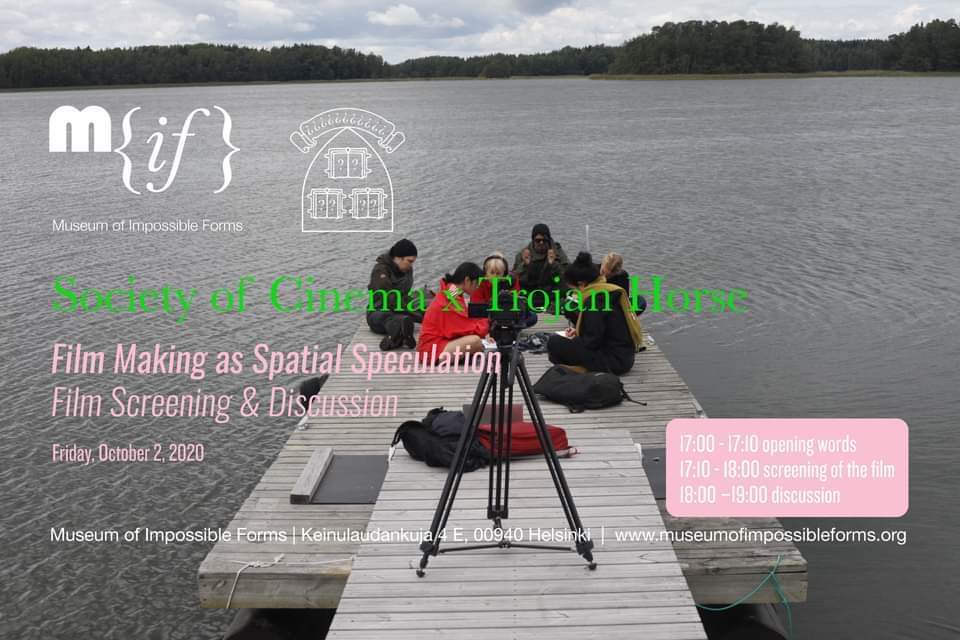 In this picture we are making direct spatial translations of our environment and a text of Tomas' environment. Tomas is a system impacted artist based in the USA. We transcended borders with our translations as we had participants located in the USA, India and Finland. Click here to see the string of interpretations: https://freetranslation.prisonspace.org/?id=detail_600 You are warmly welcomed to join the screening of the short film made collectively during the Trojan Horse Summer School 2020 – Film Making as Spatial Speculation on Friday, October 2nd from 17:00-19:00 (Finnish time). Over the summer I participated in this great event where I camped and created with people on Bengtsår Island in Finland with other participants located in the USA and in India. I was very happy with the random algorithm when picking my video pen friend. Over the course of the week Sachin Yaduvanshi and I exchanged ideas, personal histories and our environments in the most meaningful way despite the miles separated us. One of the main reasons why I wanted to join Trojan Horse was to see how to make filmmaking an inclusive tool. Due to everybody's willingness to experiment and explore and to the great guidance we had from the organisers and mentors, I feel that that was achieved. Thank you for making this possible! The event will take place entirely online on Zoom: https://us02web.zoom.us/j/87657835466... Program: 17:00 - 17:10 opening words 17:10 - 18:00 screening of the film 18:00 –19:00 discussion with the participants, mentors, and organisers Trojan Horse summer school 2020 took place on Bengtsår island and online on August 10–16. Five participants and three organizers were camping on the island in southern Finland and six participants and three mentors took part remotely from their homes and studios. During the week we shared time, stories, meals and music. Payal Kapadia, P. Sam Kessie, and Nicole Killian offered exercises for collective filmmaking reflecting the theme “Film Making as Spatial Speculation”. The workshops addressed questions related to island, bodies, memory, and collective practices. We watched films, recorded sounds, wrote body scores, and scripts. We made video letters that together formed a collaborative short film. The videoletters are made by: Shareef Askar, Kate Auman, Jo Hislop, Risto Kujanpää, Christine Yerie Lee, Hanan Mahbouba, Utkarsh Raut, Arlene Tucker, Sachin Yaduvanshi, and Karina Zavidova. The participants’ video letter correspondence - this coalition of short films- will be screened for the first time at the Museum of Impossible Forms in Helsinki on Friday October 2, 2020. You are warmly welcomed to join the screening online via Zoom. Trojan Horse Summer School 2020 - Film Making as Spatial Speculation is supported by SKR Uusimaa. Big thank you to the City of Helsinki for taking care of us in Bengtsår, Aalto University for lending their equipment for the Summer School and Museum of Impossible Forms for hosting us in their virtual and physical space. Trojan Horse is an autonomous educational platform (1) based in Helsinki. Trojan Horse organizes summer schools (2), live action role-plays, workshops and reading circles in the landscapes of architecture, design and art. Trojan Horse aims to create flexible yet steady structures that support critical discourses over a longer time span while remaining open for cross-pollinations and changes. Trojan Horse encourages designers and architects to do more experimental projects, research-based work and form bolder political statements (3).
Trojan Horse is currently organized by a group of six people in collaboration with its participants. The content of the events is a result of a collective effort, shared between the facilitators, participants, and everyone whose work supports our gatherings. As any collective or experimental endeavor, Trojan Horse still requires time, thought and effort to develop. Its identity is hybrid and under constant formation. https://trojanhorse.fi --- Museum of Impossible Forms is a cultural space, located in Kontula, Helsinki. It is a contested Space and it represents a contact zone, a space of unlearning, formulating identity constructs, norm-critical consciousness and critical thinking. Impossible Forms are those that erase and facilitate the process of transgressing the boundaries/borders between art, politics, practice, theory, the artist and the spectator. For 2019-2020, Museum of Impossible Forms operates under the curatorial theme of ‘The Atlas of Lost Beliefs (For Insurgents, Citizens and Untitled Bodies)’. Museum of Impossible Forms is a Safer Space. We follow a Safer Space policy to create a welcoming, inclusive, awesome environment. Events at the Museum of Impossible Forms are completely free and accessible without prior booking. https://www.museumofimpossibleforms.org/ |
ContributorsArlene Tucker: author and curator of TID Arch
|
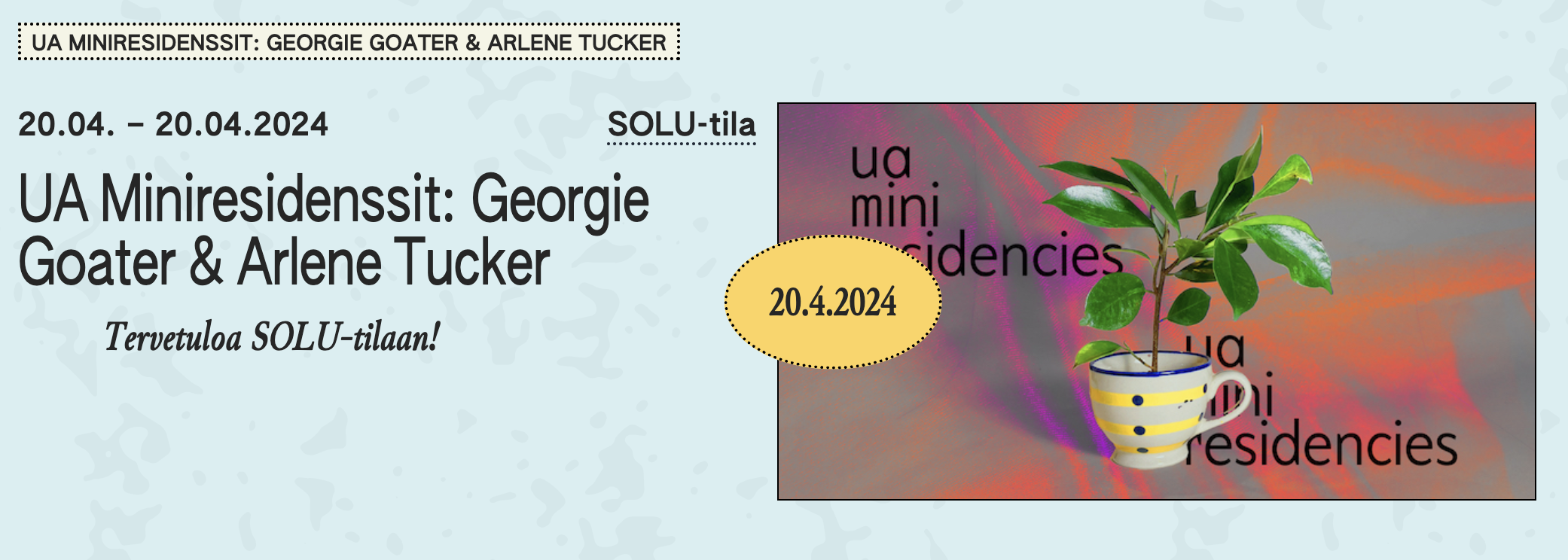
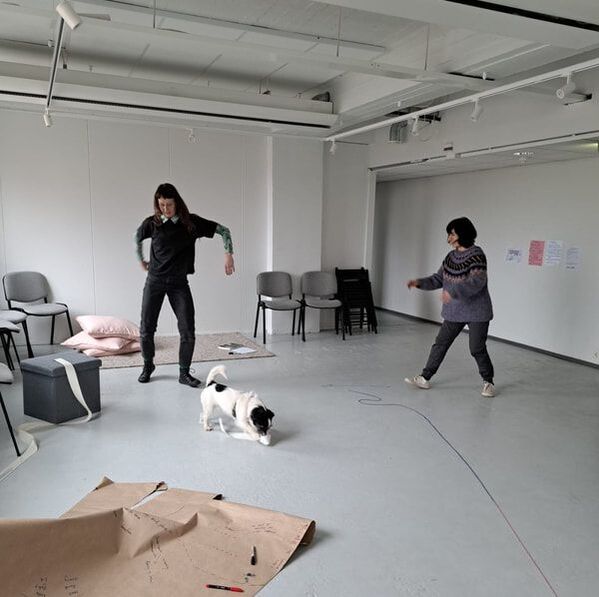
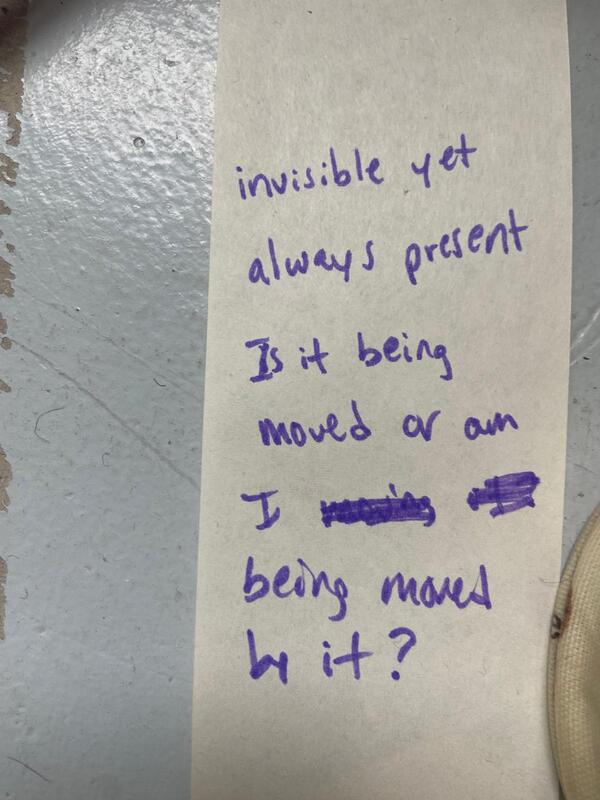
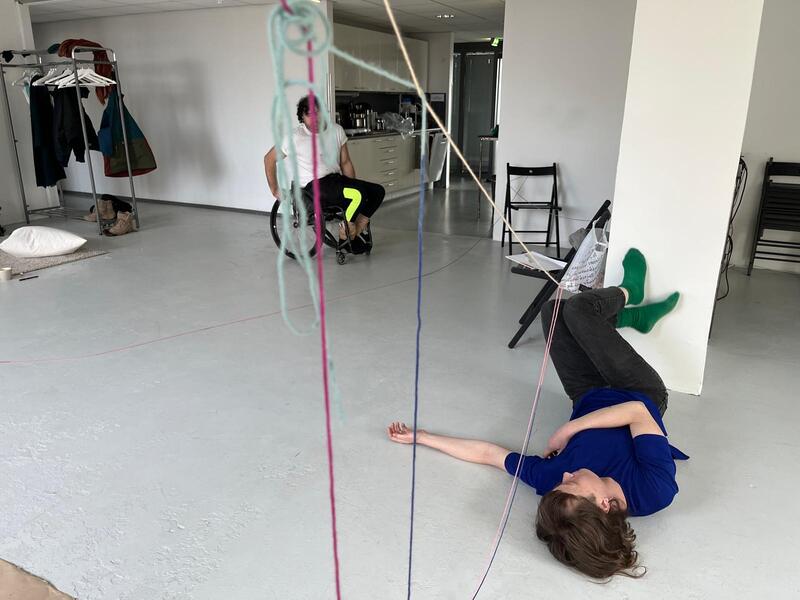
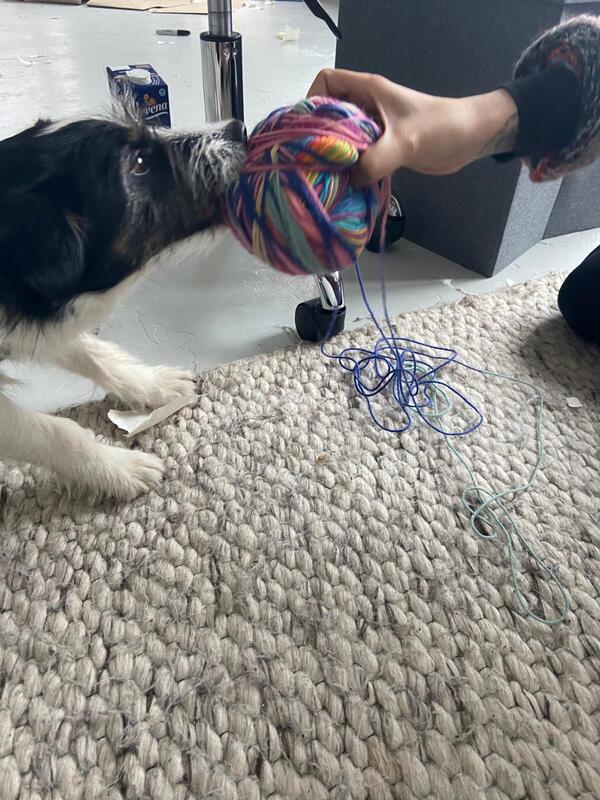
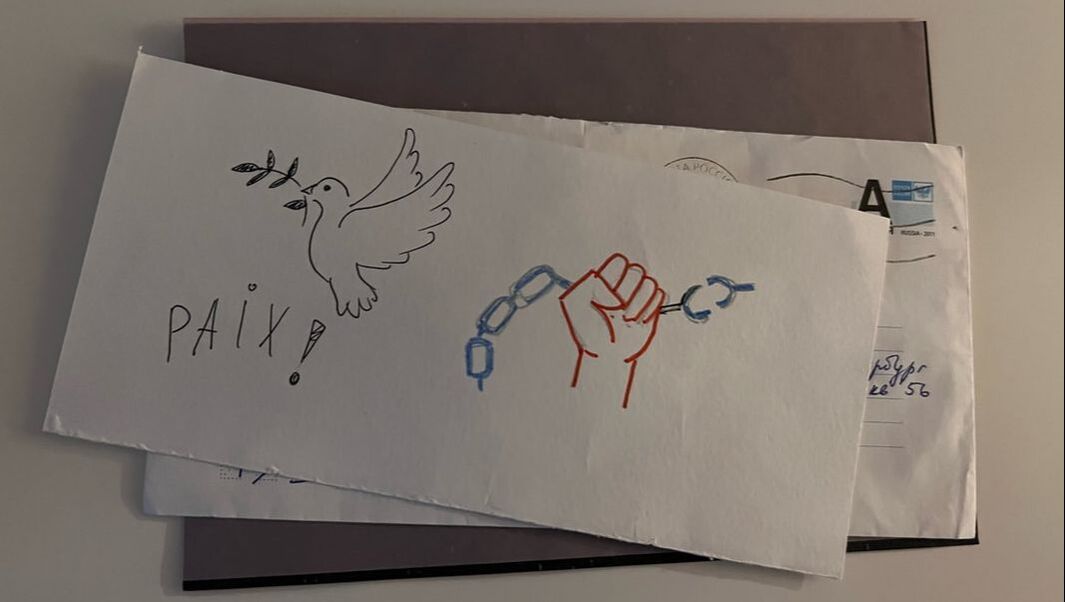
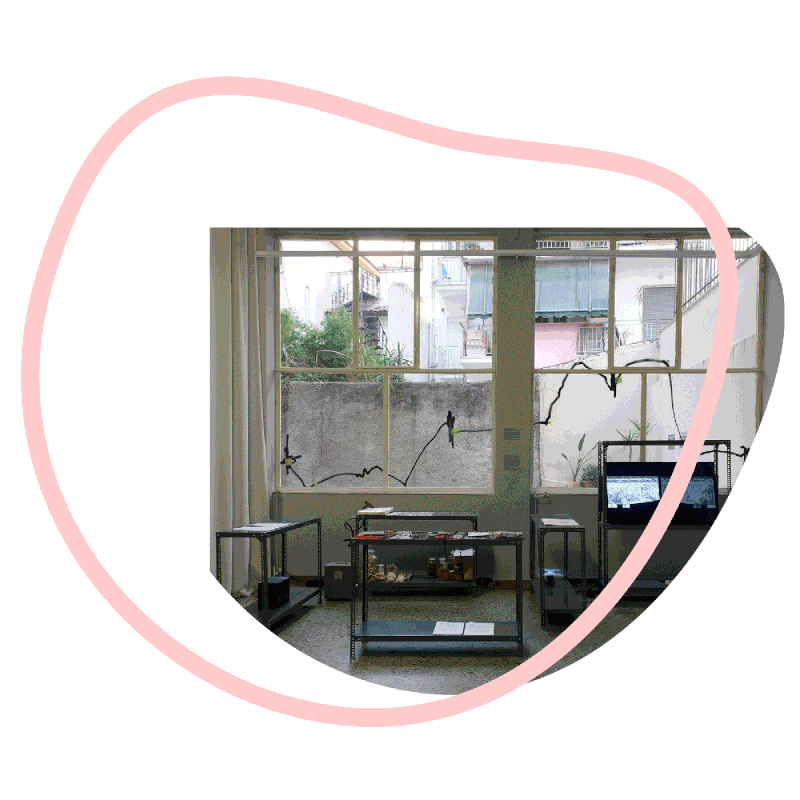
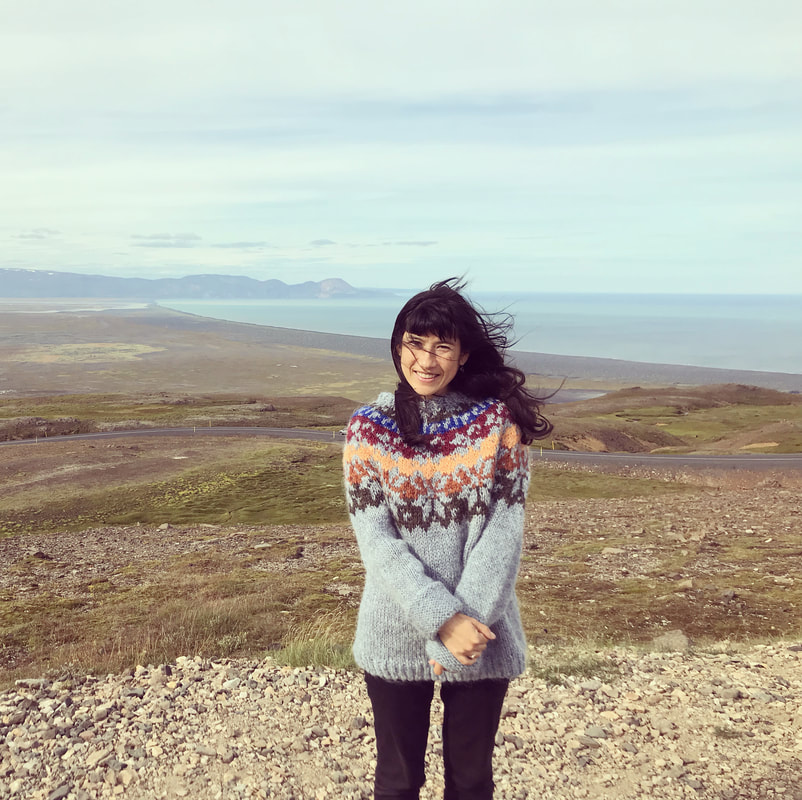



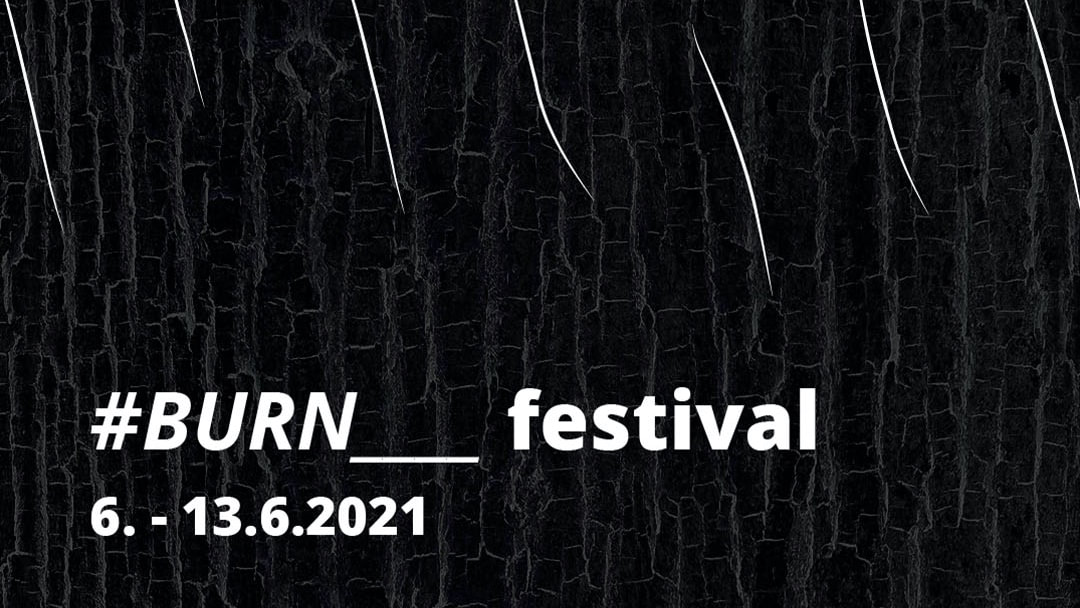
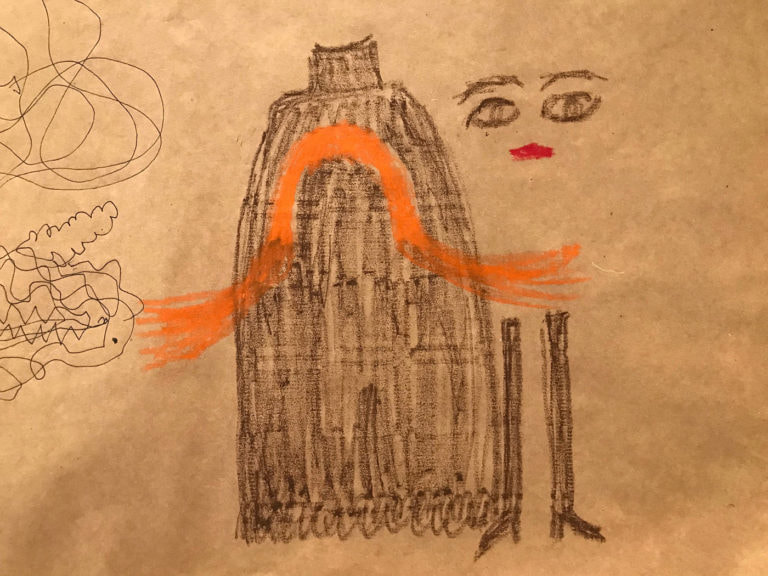
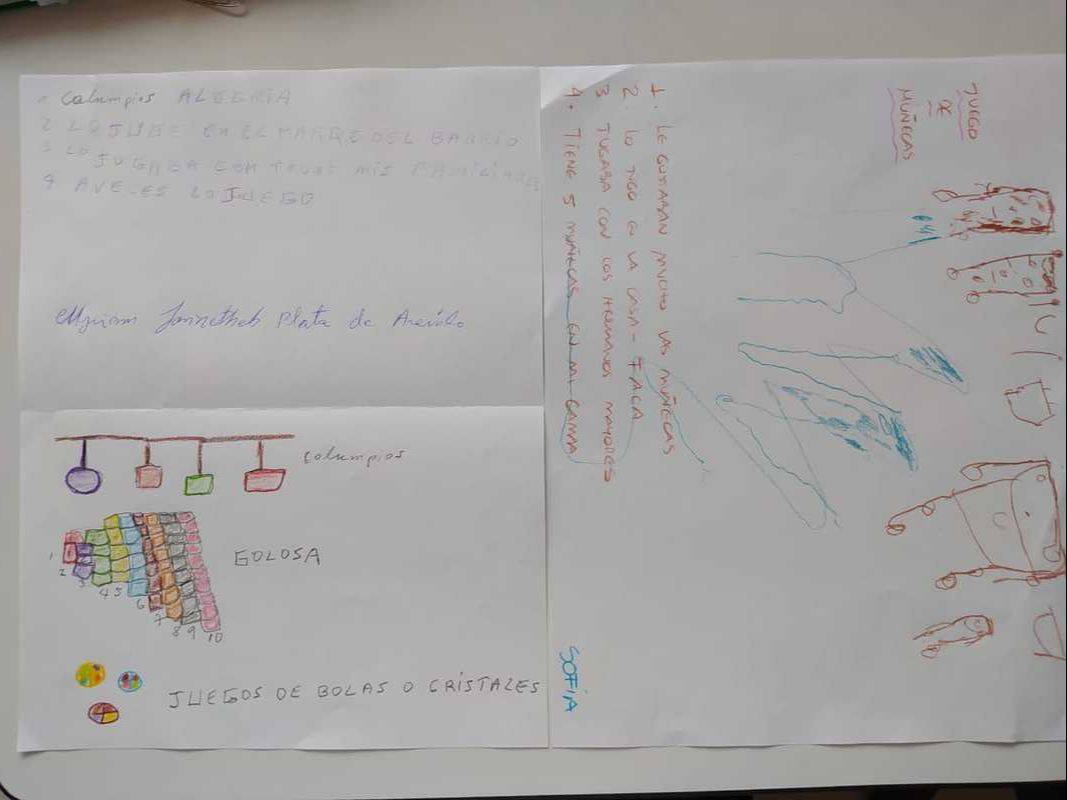

 RSS Feed
RSS Feed
